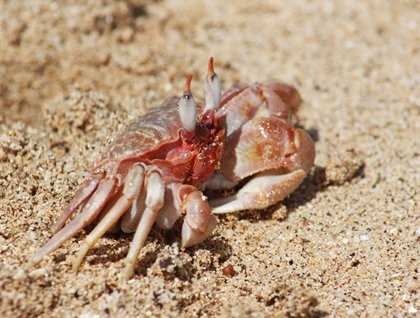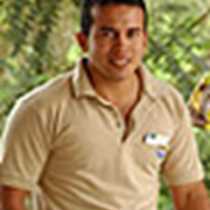We navigated to the uninhabited side of Santa Cruz; this side is actually very dry and arid. It‘s amazing how many species manage to survive in this type of environment where the sun shines every day and very little rain falls from the sky.
We had a dry landing on Dragon Hill and walked further inland where a brackish water lagoon held a couple of greater flamingos among other lagoon birds that migrate from the Canadian Tundra. It’s nice to see the place all restored by the efforts of the Galápagos National Park Service. They eradicated some introduced animals and controlled the population of others to help the endemic residents increase their original populations. Some of the endemic reptiles we saw here were the Galápagos land iguanas – large, yellow, vegetarian dragons that inhabit the dusty flat lands surrounded by the incense tree forest.
Later we took the zodiacs and headed to the coral sand beach. Some of us went deep-water snorkeling. The water was clear and there were plenty of fish of different sizes and colors. There was also a group of playful sea lions. Some of us were lucky to spot some Galápagos sharks and black-tip reef sharks.
During the afternoon we had a zodiac ride along the coast of Eden Islet and the coast of Santa Cruz. Many young black-tip reef sharks were seen around the red mangroves serving as protection for marine offspring. Some rays were seen resting in the bottom of the shallow waters of the small coves found at this site.
We headed back on board to circumnavigate Daphne Major Islet (where Peter and Rosemary Grant did research for their book “The Beak of the Finch”). Suddenly we found at a least a hundred bottlenose dolphins bow riding next to National Geographic Endeavour. They stayed with us for quite a while; within the pod we encountered a giant manta ray at least seven feet wide.
An amazing sunset with dolphins and a glass of champagne on hand was the best way to end our day!







